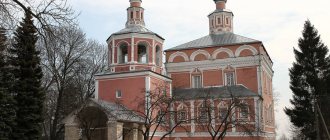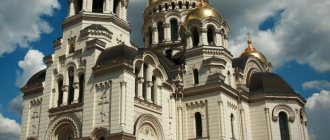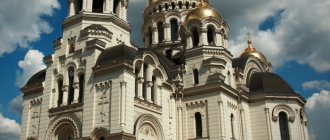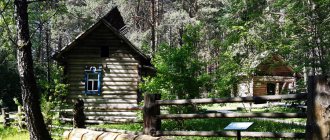Orenburg is a city with an amazing history, its secrets and legends and numerous attractions. Those who come to Orenburg need to visit the sites of the Pugachev riot, go down to the salt mines, swim in the Russian “Dead Sea”, try pickled watermelon and buy a down scarf.
Orenburg is the administrative center of the province of the same name. Year of foundation: 1743 . The city is located in the Southern Urals. The time is 2 hours ahead of Moscow. Orenburg is often called the Steppe Palmyra .
The history of Orenburg is unusual: it is the only city in Russia that was founded three times. The first time was on the banks of the Ori River, hence its name, the second time was on the site where the village of Krasnogor is now located. And only for the third time they decided to found it at the intersection of the Ural and Sakmara rivers. This is where the city is currently located.
Orenburg had a very important military-economic importance. It was built as a stronghold and a major center of trade with the peoples of the east. Here were located:
- Headquarters of the Orenburg Cossack Army.
- Military institutions.
- Barracks.
- Customs.
- Caravanserai.
- Mosques.
- Living rooms and exchange yards.
After the expansion of the borders of the Russian Empire to the south, most of the buildings lost their significance and were destroyed.
The fastest way to get to Orenburg is by air. Travel time from Moscow is 2 hours, from St. Petersburg – 3 hours. Flights operate daily. The arrival point is the central airport, which is located 20 km from the city.
Traveling by train is much longer: the journey from the capital to Orenburg will take 26 hours. The railway station is located almost in the city center.
Despite the fact that most of the historical buildings have not survived to this day, there is something to see in the center of Orenburg. It is best to take a route along the pedestrian Sovetskaya Street, which leads to the main city attractions.
Pedestrian bridge over the Urals
The main symbols of Orenburg, depicted on almost all souvenirs of the city, are the descent to the Ural River and the Europe-Asia . The white stone staircase was built just to the right of the historical descent to the river in 1955.
From here you can immediately get to the famous pedestrian bridge connecting two parts of the world. Since the Ural River is a geographical border, crossing the bridge across it allows you to make a unique journey from Asia to Europe. Most tourists prefer the funicular. This is one of the modern cable cars in Russia.
Museum of Local Lore
The local history museum in Orenburg is the oldest in Russia. Its foundation is considered to be 1830 . The museum is located in a very beautiful building - the former governor's office. Inside you can see restored interiors of the 19th century, so the halls themselves are interesting to visit. This magnificent frame is complemented by pearls from museum collections.
Here you can see:
- Award checkers for the Orenburg Cossacks.
- Cannon of the Pugachev army.
- One of the four death masks of A. S. Pushkin.
- Gold jewelry from the Sarmatian royal tombs.
There are more than 100 thousand exhibits in the museum. But to fully get acquainted with the region, only one thing is missing - an Orenburg down scarf. You can learn about its history in the nearby Museum.
Address: Sovetskaya street - 28.
Art Museum
There is a unique collection of scarves, the oldest of which is more than 100 years old. It weighs only 40 g. The Orenburg down scarf owes its appearance to Cossack women. They started knitting it at the end of the 18th century. The Cossacks quickly brought their skills to perfection. The fluff of local goats was so delicate and thin that products made from it could easily be placed in the shell of a goose egg and passed through a wedding ring.
Openwork spider webs received high awards at all international exhibitions. They were also coveted gifts for the imperial families of Europe. And today a down scarf is the most popular souvenir from Orenburg.
Address: Kashirina Lane-29.
TOP 7 graffiti of Orenburg: best locations for photos
The art of graffiti continues to actively develop in Orenburg. As part of various street art festivals, young artists paint the facades of houses and the walls of concrete fences. Through their works, graffists express gratitude to doctors, firefighters, and honor the memory of famous musical performers. Ural56 compiled the TOP 7 graffiti in Orenburg, which are definitely worth seeing. This is a small selection of locations where you can get stylish photos.
Wall of memory of rapper Decl
Wall of memory of rapper Decl, trans. Kashirina, 14
The author of the largest graffiti in Orenburg was an artist from Sterlitamak, Maxim Timirbulatov. In 2022, the city’s department of urban planning and land relations gave permission to fans of Kirill Tolmatsky to decorate the walls of one of the buildings in the regional center. In August 2022, the airbrush artist began work. The graffiti is located on an area of 100 square meters, the cost of the image is about 65 thousand rubles. Fans of Kirill Tolmatsky themselves collected funds for the implementation of this project. On the wall, in addition to the portrait, there is a sign of the Rastamafia group, symbolizing open creativity, and lines from his song are quoted. You can see the image of the famous rapper at Kashirina Lane, 14.
"Heroes of Our Time"
"Heroes of our time", st. Rybakovskaya, 100v.
The graffiti “Heroes of Our Time” appeared in Orenburg on Rybakovskaya Street on the wall of the trolleybus depot building. The author of the image is student of Orenburg State College, volunteer of the volunteer center Daniil Erosko. It was he who represented the Orenburg region at the street art festival of the Volga Federal District “FormART”, dedicated to the fight against COVID-19. As the author himself notes, the graffiti dedicated to doctors is his first large-scale work. To turn his idea into reality, he needed 30 liters of aerosol paint and the help of fellow volunteers.
XXXTentacion graffiti
Graffiti depicting famous rapper XXXTentacion, st. Red Square
Graffiti depicting the famous rapper Jahseh Dwayne Onfroy, under the pseudonym XXXTentacion, appeared in Orenburg back in 2022. Its author was an artist from the art group Artgraffica56. A portrait in memory of the murdered rap artist appeared on Red Square. As the author himself noted, the idea to create such graffiti came to him together with a client who is a fan of the rapper’s work. According to the author’s idea, on the wall, in addition to the portrait, a line from one of the performer’s songs was added.
Over the three years of its existence, the image of Jahseh Dwayne Onfroy has undergone a transformation. Apparently local “artists” decided to form their own vision of modern graffiti. Now the image of the famous rapper looks like this.
Graffiti depicting the famous rapper is also a favorite spot for photographers.
Parking on the street Red Square is the main place where graffiti is concentrated. Here the walls are covered with both festival and unauthorized drawings. Graffiti here is painted one on top of another, without being shy in expressions and artistic means. This is how a mythical culture, educational, alien, is presented here; there is even a vision of the painting “The Creation of Adam”.
Graffiti depicted on the walls of the parking lot on the street. Red Square
Retro graffiti
Retro graffiti on the territory of the central market
There is unusual retro graffiti on the territory of the central market. The author of the historical drawing on the wall of the Megapolis shopping center was Anna Dryganova, the muralist timed her work to coincide with the 140th anniversary of the central market. Retro-style graffiti is made in the form of a collage of photographs from different eras, both the Soviet and Tsarist periods. Anna Dryganova worked for a month to create this image, and the artist Dmitry Sumbaev also helped her.
Graffiti to firefighters
Graffiti depicted on the facade of the crisis management center building, st. Gaya, 21
Orenburg graffist Daniil Mishchenko created his art object for the 30th anniversary of the Main Directorate of the Ministry of Emergency Situations of Russia in the Orenburg region. The image is located on the facade of the crisis management center building on the street. Gaya, 21. As the artist himself notes, in his composition he reflected not only the fire service, but also rescuers who interact with each other. The figure shows a total area of 100 sq. meters Daniil Mishchenko also depicted emergency numbers. It took the artist only 2 weeks to create the graffiti.
Einstein-Rosen Bridge
"Einstein-Rosen Bridge", st. Eastern, 29
From September 2022 on the facade of a nine-story building on the street. Vostochnaya, 29 is decorated with graffiti “Einstein-Rosen Bridge”, dedicated to the 275th anniversary of Orenburg. The art object appeared as part of the largest Russian festival of street art and graffiti “Stenography”. The drawing is about 300 square meters. meters was depicted by the Ekaterinburg team Stenografia. The art object is named after the astrophysical phenomenon “Einstein-Rosen Bridge”, connecting two universes.
Mr. Baron
Mr. Baron, st. Gagarin Avenue, 21/8
The selection of TOP 7 graffiti of Orenburg is completed by the cat Baron. The author of this drawing is Orenburg artist, graffist Dmitry Sumbaev. He decided to paint a portrait of his cat on the wall of one of the garages in the courtyard of the house on the street. Gagarin Avenue 21/8. As the residents themselves note, with the appearance of Mr. Baron, Donkovtsev Street has become much more comfortable.
Orenburg downy shawl
The legendary down products are still knitted throughout the region. Each village has its own secrets and traditions that are passed on from generation to generation. The process of making an Orenburg scarf has remained virtually unchanged for hundreds of years.
As before, goats are scratched in winter. Then the hairs are selected so that the product does not prick. After this, the fluff is combed. Down thread is spun by hand using a spindle.
It will take a month to knit a good scarf. After knitting, it is washed and carefully stretched on special frames for each clove. When it is completely dry and takes shape, the scarf will be sent to the buyer.
It is best to buy scarves at local markets. From early morning, crowds gather here wanting to sell and buy something downy: mittens, scarves, socks, stoles and, of course, scarves. They are available in the market in all shapes, sizes and colors. The main rule when buying: you need to choose a scarf by touch. Unlike the shaggy Volgograd and prickly Angora, Orenburg down should be soft and warm.
Another important criterion will be price. The starting price of stoles is 700 rubles , warm scarves – from 1500 , designer webs can reach several tens of thousands of rubles. In any case, no one leaves Orenburg without a downy miracle. Unlike other souvenirs, this item is useful and practical.
TOP 10 anomalous places in Orenburg
© “1743.ru”, project by IP Savin V.V., 2022. Use of materials posted on the website 1743.ru is permitted only with written permission from the Editorial Board indicating an active link to the website 1743.ru. 1743.ru is not responsible for the content of advertisements, comments and advertising materials. Comments on site materials are the personal opinions of site visitors. Any automatic export of site content is prohibited.
Orenburg portal
More than 500 thousand people live in Orenburg, and everyone wants to know about the news and events of their city.
For this purpose, the official website
of the city
1743
. But not only events take place within the metropolis; 2022 will delight the surrounding areas, or more precisely, Sol-Iletsk, Orsk and Buzuluk. It is there that some events will be held, which the entire region will come to attend. Online, you can learn about everything you need to live a comfortable and informed life. With us it will become bright, because you will always be aware of events, impressions and memories from which will last a lifetime, warming you with warmth.
City portal
Orenburg is the largest source of information about the history, features and attractions of the city, which will be useful for both the population and its guests.
Do you want to relax, but don't know where to go? Rest assured, we will help you choose. For cheerful groups who want to relax both soul and body, we suggest visiting the sauna, and for more important meetings - the best restaurants in the city. Go with your loved one to a movie or a concert, and you will find information about show times in the “Poster”
.
City information portal
For those looking for a job or product, we can suggest visiting the classifieds section. In order to respond to the information offered, there is no need to register. When searching for services, citizens will also be able to easily find the option that suits them. Convenient navigation will provide you with easy use of the site, and its fast operation will be pleasant for everyone.
We recommend to users: 1. Articles only with current news
, coming out at a rate of several per hour.
This way you will definitely be among the first to know about everything that happened. 2. Information about new and, most importantly, important events in the city, which will help you keep abreast of everything that is happening. 3. Information about rising prices and promotions. This way you will definitely be ready for anything. 4. Weather forecast
.
The portal's regular practice includes posting photographs of the city and a schedule of events that are offered to you. We also recommend our magazine, which will especially appeal to the fair half of the townspeople. Only useful articles about beauty and fashion, raising children and the safety of the whole family. And in the dating section you can find your soulmate who will make you happy.
Our website contains the whole life of Orenburg, and if you live in this city, then viewing the portal should become firmly established in everyday life.
| Online edition | «1743» |
| Registered | Federal Service for Supervision of Communications, Information Technologies and Mass Communications (Roskomnadzor) |
| Registration number | EL No. FS 77-75960 dated June 19, 2019 |
| Founder of the media | Individual entrepreneur Savin Vladimir Valerievich |
| Editorial address | 462411, Orenburg region, Orsk city, Leninsky Komsomol street, 4-B |
| Chief Editor | Samadova L.A. |
Tel.: +7-922-899-17-43
e-mail: [email protected]
Media information products - 18+ (prohibited for children)
Pride and glory of Orenburg
There is a unique place in the city center that unites three projects:
- "Good Angel of Peace"
- "The best people in town"
- "Walk of Fame"
Here anyone can learn about Orenburg professionals, its honorary residents and heroes.
Address: 9 January street - 64.
petting zoo
The cozy zoo is a popular attraction in Orenburg. You won't find a tiger, lion or bear here. Zoo inhabitants are not dangerous to humans. You can pet them, feed them, and take a photo with them.
Animals live in open enclosures. The zoo area is well-groomed and clean. Safety meets all accepted standards.
Address: st. Postnikova, 30, near the city center.
House on Sovetskaya
This building on Sovetskaya Street, 36 attracts attention not only with its architecture, but also with the message left on it. Three letters - PFP and the number - 1914. What do they mean? The fact is that a little over 100 years ago the building was built on the initiative of the merchant of the 1st guild Pyotr Fedorovich Pankratov.
In the spring of 1914, a message appeared in local newspapers that a new cinema called the Apollo Theater was currently being built by the merchant Pankratov on Nikolaevskaya Street. The cinema was opened in September of the same year. In memory of this, the merchant's initials and the year of completion of construction appeared in glazed tiles on the façade.
Pankratov was a prominent businessman in Orenburg and enjoyed obvious authority and respect from his colleagues. He was the owner of a large trading house. Nowadays this building is on Matrossky Lane, 7.
At the intersection of Kirov and Sovetskaya streets there is a large apartment building of Pankratov , whose apartments were rented out.
Church of St. John the Evangelist
It is impossible not to notice the beautiful temple on Grigorievskaya Street. Red brick walls, green domes, well-groomed territory around - the temple makes an impression on believers of Orenburg and tourists.
The church was erected in 1902. In the first years after its construction, it housed a women's parochial school. The school has now been moved to another building.
Monuments to Pushkin in Orenburg
The great poet and writer A.S. Pushkin visited Orenburg to collect information about the Pugachev riot. The result of this trip was two stories: “The Story of Pugachev” and “The Captain’s Daughter.” The poet spent only two September days in Orenburg, but the memory of this is still carefully preserved.
On the main pedestrian street of the city there is a monument to Pushkin and his good friend, the writer-ethnographer Vladimir Dahl. The author of the monument was a native of Orenburg, Honored Artist of Russia N. G. Petina. It is noteworthy that on the monument Vladimir Ivanovich is without a headdress, and Alexander Sergeevich is wearing a top hat.
The fact is that Dahl turned out to be a whole head taller than the poet. In order to visually balance them, the sculptor used such an interesting move. The author of another Orenburg monument to Pushkin, located near the city history museum, endowed him not only with a powerful physique, but also with a limp: the left leg of the bronze poet turned out to be 40 cm longer.
This monument might not have appeared in Orenburg. Created in the mid-1980s. The Armenian sculptor Stepanyan made it unique. The hands of the bronze Pushkin turned out to be too large, and you can see Armenian features in his face.
According to legend, when deciding the fate of the sculpture, the city commission turned to the students of school No. 25, where the sculptor worked. And only after the students recognized the famous poet in the sculpture, it was recognized as suitable.
Sights of Orenburg
Sights of Orenburg. The most important and interesting sights of Orenburg - photos and videos, descriptions and reviews, location, websites.
- May tours
to Russia - Last minute tours
to Russia
- Orenburg, st. Altayskaya, 3
the very bestCultural complex "National Village"
Orenburg, st. Altayskaya, 3
Located at the junction of Europe and Asia, Orenburg simply cannot be considered an ordinary, boring and uninteresting city. This is a truly unique place, whose history contains many fascinating pages. And a couple of dozen volumes are filled with heroic, fateful stories.
- fabulous
Orenburg, st. Chkalova, 8
the very best
St. Nicholas Cathedral in Orenburg
fabulous
1 review
Orenburg, st. Chkalova, 8
Orenburg is not such an old city, but it has experienced and seen a lot in its history. There are a lot of interesting sights of various types left here. And, as in many other Russian cities, the most beautiful and solemn buildings in the city are churches.
- Orenburg, st. Soviet
Tower with chimes in Orenburg
Orenburg, st.
Sovetskaya In the very center of Orenburg, on its main and, of course, one of the most beautiful streets of the city, now bearing the faceless name Sovetskaya, and once called Nikolaevskaya, the eye is literally attracted by a tall, neat and slender building with a spire, very similar to a Lutheran church. - Orenburg, st. Kirova, 13 / st. Sovetskaya, 23
Gostiny Dvor in Orenburg
Orenburg, st.
Kirova, 13 / st. Sovetskaya, 23 Orenburg, like many other border cities, was founded to develop trade with neighboring Asia. And where there is trade, there are large shopping malls - or, as they were called then, Gostiny Dvors. The complex of elegant buildings in the classicist style is the rebuilt brainchild of Johann Werner Müller. - Orenburg, st. Embankment, 27/2
Children's railway in Orenburg
Orenburg, st.
Embankment, 27/2 In the amazing and original Orenburg there are a lot of equally original and interesting sights. These are ancient houses, majestic churches, and, of course, the amazing nature of the Orenburg region, located at the junction of Europe and Asia. - Orenburg, Dzerzhinsky Ave., 25
Kazan Cathedral in Orenburg
Orenburg, Dzerzhinsky Ave., 25
The magnificent Kazan Cathedral in Orenburg was built at the end of the 19th century, so firmly that the Bolsheviks had to blow it up for almost two years. But they managed it and, on the site of a neo-Byzantine temple of striking beauty, they built a gray building in the Stalinist Empire style. - Orenburg, Parkovy Ave., 6
"Caravanserai" in Orenburg
Orenburg, Parkovy Ave., 6
While walking through the historical center of Orenburg, you can get into a traditional Bashkir village - the famous historical and architectural complex “Caravanserai” is designed in this style. Built in 1846 to house the command of the Orenburg Corps. - Orenburg, st. Burzyantseva, 30a
Memorial complex-museum “Salute, Victory!”
Orenburg, st.
Burzyantseva, 30a City Garden named after. Frunze was transformed into the memorial complex-museum “Salute, Victory!” ahead of her 60th birthday. The fairly overgrown flowerbeds were cleared, arches were installed over the alley leading to the Eternal Flame at the monument to those who fell in the Great Patriotic War. - Orenburg, st. Kirova, 3
Husainiya Mosque
Orenburg, st.
Kirova, 3 For fans of Muslim temple architecture, Orenburg will seem like a treasury - there are 7 cathedral mosques built more than 100 years ago. Husainiya, whose minaret dominates the southern part of the city. - Orenburg, per. Kashirina, 29
Museum of Fine Arts in Orenburg
Orenburg, per.
Kashirina, 29 Famous openwork scarves, an extensive collection of naive paintings, masterpieces by Aivazovsky and Savrasov - all this can be seen in the Orenburg Museum of Fine Arts. Despite the fact that it was opened in 1961, its collections contain paintings painted back in the 16th century. - Orenburg, st. Embankment, 29
Museum of Orenburg History
Orenburg, st.
Embankment, 29 The wonderful city of the famous down scarf, we bet it will surprise every guest. For example, few people expect to see in this corner of the Urals, which bears the name of Orenburg, which is atypical and outlandish for these places, a real red-brick castle with a crenellated tower. - Orenburg, st. Embankment, opposite No. 16
Orenburg cable car
Orenburg, st.
Embankment, opposite No. 16 You can get from Europe to Asia for just 70 RUB by taking a ride on the cable car in Orenburg, officially it is called “Europe - Asia”. The cable car crosses the Ural River at the point of the conventional border between the continents. - Orenburg, st. Embankment, 29
Orenburg Fortress
Orenburg, st.
Embankment, 29 Most Russians know the Orenburg Fortress from the novel by A. S. Pushkin “The Captain's Daughter”. In reality, only a few fragments of the powerful structure that was at the center of the events of the Pugachev rebellion have survived to this day, but they are quite capable of conveying the spirit of the times. - Orenburg, st. Sovetskaya, 28
Orenburg Museum of History and Local Lore
Orenburg, st.
Sovetskaya, 28 The Orenburg Museum of History and Local Lore is also officially called the “governor's museum” - in memory of the head of the region, Count P. P. Sukhtelen, who issued a decree on its founding in 1830. The subsequent history of the museum was quite turbulent; exhibits were distributed several times to different institutions. - Orenburg, st. Embankment
Pedestrian bridge in Orenburg
Orenburg, st.
Embankment Bridges always have a special metaphysical meaning as something that connects opposites into a single whole. This fact is best reflected in the city of Orenburg, which itself can be considered a kind of “bridge between Asia and Europe.” - Orenburg region
Sorochinskoye Reservoir
Orenburg region
Near the city of Sorochinsk in the Orenburg region there is a large reservoir. It is laid along two rivers: Samara and Bolshoi Uran, the deepest place is 12.8 m. The reservoir is favored by local fishermen. - Orenburg, st. Grigorievskaya, 10
Church of St. John the Evangelist in Orenburg
Orenburg, st.
Grigorievskaya, 10 Against the backdrop of one-story buildings near the center of Orenburg, the small but beautiful Church of St. John the Evangelist, built at the beginning of the 20th century with private donations, stands out. Its post-revolutionary fate is common.
October 10, 1731 became an important milestone in the history of Orenburg.
Moreover, this date is directly related to the appearance of such a geographical name on the map of Russia. On that day, the elders of the local Kazakhs decided to voluntarily join the Empire. The new subjects pledged to pay yasak, protect Russian merchant caravans, and in return asked for the right of eternal succession to the throne and a promise to build a fortress on the Ori River, which became the first sign of the appearance of this city. However, the place chosen for the fortress turned out to be unsuitable; as a result, construction began further down the river, but it turned out that the bald mountain far from the reservoir was of little use for construction. And finally, in April 1743, the future Orenburg was founded for the third time. Now this place at the confluence of Yaik and Sakmara has become the historical center of the city. Initially, Orenburg was destined to become one of the key fortresses in Russia, which, in general, happened. It is not surprising that today this city is a real crossroads of West and East, European and Asian cultures. Therefore, one of the main attractions and symbols of Orenburg is a unique bridge on the main embankment, on which there is an imaginary border between two parts of the world, which is quite eloquently conveyed by the border pillars with the inscriptions “Europe” and “Asia”.
Orenburg is a city at the crossroads of cultures and civilization, a borderland between Europe and Asia, the birthplace of the famous down shawl, glorified in musical works, a Cossack region where many famous people have been...
Another well-known symbol of the Ural city, its “calling card”, is a wonderful-looking tower with a clock-chime, which is a light, soaring, red-brick structure, reminiscent in appearance of a medieval town hall or church. The chimes have a unique feature: several times a day, during their chime, which is often replaced by various melodies, one-and-a-half-meter allegorical figures, representing symbols of the city and its inhabitants, look out of the windows. For example, a Cossack or a craftswoman who makes the famous Orenburg scarves.
It is impossible not to mention such a beautiful building as the snow-white golden-domed St. Nicholas Cathedral. There are many amazing and even miraculous things associated with this cathedral. For example, during the years of Bolshevik power, at a time when churches were closed and destroyed throughout the country, St. Nicholas Cathedral was the only one of 40 churches in Orenburg that was never destroyed.
This city is rich in all kinds of architectural delights of various styles, times and movements. Especially in Orenburg, a small, neat red-brick castle stands out, very reminiscent of the strongholds of the Middle Ages in Western Europe. This amazing structure was erected according to the design of a self-taught architect, peasant Ivan Skalochkin. Once it was intended for warehouses, later it served as a guardhouse, today it houses the Orenburg Historical Museum. Which, by the way, is definitely worth a visit to get to know the fascinating and original history of the city.
Orenburg has always been a city at the intersection of different cultures and traditions, and therefore it was quite logical for the emergence of a unique architectural and historical complex here called the National Village. It is a street along which traditional dwellings of Russians, Bashkirs, Kazakhs and other representatives of the Orenburg region are lined up next to each other. Each farmstead has a museum and even a restaurant where you can taste excellent national cuisine.
Finally, another noteworthy attraction of Orenburg is the Children's Railway, which runs from the city center to the most picturesque surroundings. Almost along its entire length it runs along the Ural River. This, by the way, is one of the longest children's railways in Russia.
A city at the crossroads of cultures and civilization, a borderland between Europe and Asia, the homeland of the famous down shawl, sung in musical works, a Cossack region where many famous people have visited - all this is wonderful Orenburg.
House of the Noble Assembly
The House of Noble Assembly was erected under the governorship of Vasily Alekseevich Perovsky. On December 2, 1841, its grand opening took place. On this occasion, a brilliant ball was given, no worse than in St. Petersburg.
This building is an example of the highest art, the harmonious style of late classicism, which dominated from the beginning of the 19th century in Europe and the Russian Empire.
Address: Sovetskaya street - 17.
Caravanserai
One of the most remarkable architectural monuments of Orenburg is the Caravanserai. Its construction began in the spring of 1838. The Caravanserai was supposed to become a place of refuge for the Bashkirs and other peoples of Central Asia, and also serve to strengthen international ties.
The architectural complex included the main building, a mosque, a minaret and outbuildings. The specifics of the building are determined by the national Bashkir flavor, which has been preserved to this day.
Address: Parkovy Prospekt street - 6/1.
Museum of Orenburg History
On Naberezhnaya Street, 29 there is a unique architectural monument of Orenburg - the Museum of the History of the City. This building was built in 1856, as evidenced by the inscription on the main facade. His project was adopted in St. Petersburg by the Department of Military Settlements.
In terms of its external architectural appearance, the museum is similar to a medieval castle. The main facade features a trapezoidal bay window with a central entrance located in the middle and two large window openings on the sides. This building attracts with its color harmony and harsh appearance.
Water tower
Looking at this structure, it’s hard to believe that the building is more than a hundred years old. In 1904, at the intersection of modern Pobeda and Zhukov avenues, a revolutionary structure for those times was built.
The tower was intended for water purification. The useful volume was about 80 buckets. The water tower was the first step towards the rapid development of the city.
The architectural monument has been restored and makes a good impression. The building is located on the street. Gorky, 57.
Merchant houses
Numerous merchants of Orenburg fell so in love with the new architectural style that arose at the turn of the 19th – 20th centuries that even the term “merchant modern” appeared. Along the streets of Chicherin, Yaitskaya, Kirov, Sovetskaya, one can still find strong houses of Orenburg merchants, built in a similar style.
Examples of such architecture include:
- House of merchant Korobkov on Chicherin Street.
- The house of the merchant Pankratov at the intersection of Kirov and Matrossky. It featured the first passenger elevator in Orenburg.
Paragliders
In the city where the famous Chkalov flight school was located, and Gagarin made his first airplane flight, residents and guests continue to conquer the skies.
Paragliding is a way to fulfill your dream of soaring to the clouds. In Orenburg, ideal conditions for paragliding are:
- The weather is always clear.
- Constant strong wind.
- A large number of grass covered slides.
Even those who are afraid of heights and paragliding will be delighted by the stunning spectacle.











